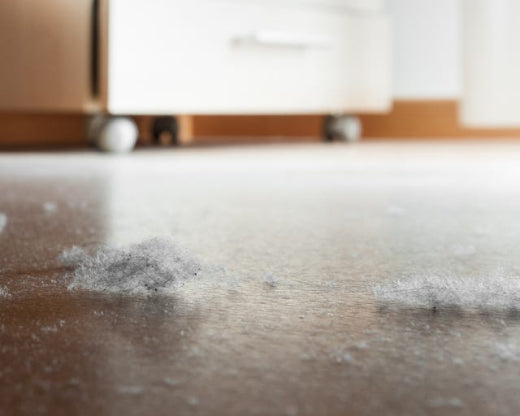
HOW TO VACUUM TO REDUCE ALLERGENS IN YOUR HOME
If you suffer from allergies, keeping your home clean isn't just about appearances - it's about health. Dust mites, pet dander, pollen, and mold spores love to settle into carpets, furniture, and even walls, quietly triggering sneezing, wheezing, and itchy eyes. One of the most effective ways to combat these invisible irritants is regular, proper cleaning with the right vacuum for allergies. But not all vacuuming is equal. Here's how to vacuum the right way to reduce allergens in your home.
Choose Your Tool Wisely: The Right Cordless Vacuum Cleaner
Start with the right tool. A high-quality cordless vacuum offers both flexibility and power - two essential features for allergy control. Look for a model with:
- HEPA filtration: This traps 99.97% of particles as small as 0.3 microns, including pollen, pet dander, and dust mites.
- Strong suction power: To pull allergens out from deep within carpets, mattresses, and upholstery.
- Brush Roller: Great for agitating and lifting stubborn par ticles.
- Easy Emptying: Emptying should be quick and hygienic to avoid re-releasing allergens into the air.
Strategy Matters: Vacuum Top to Bottom
Dust doesn't just settle on floors - it also floats and lands on furniture, curtains, light fixtures, and shelves, which is why it’s important to vacuum from top to bottom. Start with ceiling corners, vents, and curtain rods using a dusting attachment, then move on to furniture surfaces and cushions, and finally finish with the floors, rugs, and carpets where allergens tend to accumulate the most.
Technique is Key: Vacuuming for Maximum Allergen Removal
Don't just run the vacuum over the floor quickly and call it a day. To truly reduce allergens, try these techniques:
Slow passes: Move the vacuum slowly to allow it enough time to agitate and suck up deep-seated dust.
Multiple directions: Vacuum rugs and carpets in different directions to catch particles hidden in the fibers.
Use attachments: Clean crevices, baseboards, upholstery, and even mattresses regularly with the appropriate tools.
Minimize Air Disturbance: Avoid vigorously shaking rugs or curtains before vacuuming - this just aerosolizes allergens. Use the vacuum attachment directly.
Consistency is Crucial: Regular Vacuuming Schedule
Consistency is key to keeping allergens under control. Depending on your household, aim for:
High-Traffic Areas & Pet Zones: Vacuum 2-3 times per week. This includes living rooms, hallways, and anywhere your pets frequent.
Other Carpeted Areas: Vacuum at least once per week.
Hard Floors: While easier, allergens still settle here. Vacuum (with the brush roll off if possible) or damp mop 1-2 times per week.
Upholstery & Mattresses: Vacuum once every 1-2 weeks.
Seasonal Peaks: Increase frequency during high pollen seasons or if allergy symptoms flare up.
Allergy relief starts with a cleaner home - and smart vacuuming is one of your strongest defenses. With the right cordless vacuum, a top-to-bottom strategy, and proper dust-busting techniques, you can tackle hidden allergens at the source. Keep up with a regular routine, and you’ll not only breathe easier but also create a more comfortable, healthier space for you and your family. Small changes in how you clean can make a big difference in how you feel.






